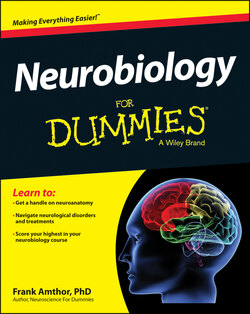Читать книгу Neurobiology For Dummies - Frank Amthor - Страница 35
Learning and memory: Circuits and plasticity
ОглавлениеA behavioral hallmark of mammals is they can change their behavior through learning. High-level learning involves a neural representation of both an event and its context. Much of this representation occurs in the lateral prefrontal cortex as what is called working memory. This area of cortex has extensive connections with the hippocampus, where modifiable synapses containing NMDA receptors abound. Reciprocal connections between the hippocampus and the neocortical areas that originally represented that which is to be remembered instantiate the memory “trace” back in those areas of the neocortex.
The finding that the neocortex represents both original sensory input and its memory has profound implications for understanding what memory is. Many neuroscientists now believe that memory is intrinsically reconstructive — a hallucination, if you will. This is a very different metaphor from the token look up and address model taken from computer science. One important aspect of the reconstructive aspect of memory is that the act of reconstruction can distort the memory. Suggestions, guesses, and events after the memory can affect the reconstruction such that they become part of, and indistinguishable from, subsequent reconstructions.
The neurobiology of memory depends both on modifiable synaptic weights, such as with NMDA receptors in hippocampus and cortex, and the creation of new neurons in memory areas such as the hippocampus. The discovery of the birth of neurons in the adult hippocampus overturns the old idea of zero neurogenesis in the adult brain. Some senile dementia and even depression appear to be associated with failure of this mechanism.
